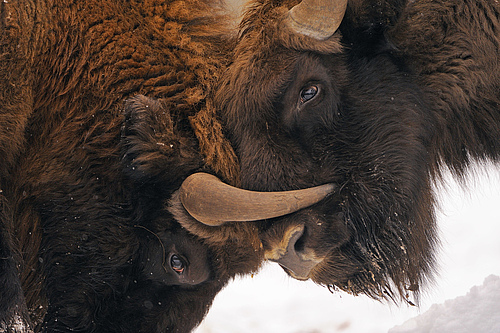Media releases from 2020
all news | only media releases
Most comprehensive evaluation of the occurrence of vascular plants in Germany to date › more
Most important German research award › more
Study shows: Happier people often congregate in environments with many bird species › more
City could become a global reference for plant biodiversity researchers › more
Information system on Europe’s biodiversity and ecosystems for policy makers › more
Experts from research, authorities and NGOs develop a common vision and evaluate possible measures › more
New iDiv research group investigates communication between plants and animals › more
Due to rising temperatures and longer dry periods, two plant species have already gone extinct. › more
Integration of contributors promotes the quantity and quality of data › more
A first assessment of the effects of land management on the linkages between biodiversity, ecosystem functions and ecosystem services › more
Research group of iDiv and Jena University uses novel research method to study effect of insect decline on plant biodiversity › more
New publication in Science with iDiv contribution › more
Position paper with participation of iDiv scientists › more
Biodiversity experiment provides new insights into the relationship between plant traits and ecosystem functions › more
New method developed at UFZ and iDiv combines image-based particle analysis with artificial intelligence › more
Data collected at species-rich sites may lead to the wrong conclusions on overall trends › more
New automated method quickly and accurately reveals which species are most threatened › more
First international assessment of the protection state of mostly ‘untouched’ forests in Europe › more
Both historical and recent variation in ecological and environmental conditions are associated with larger behavioural repertoires in wild chimpanzees › more
How biodiversity could be preserved globally without sacrificing necessary production output › more
Based on a media release by the Leibniz Institute for Plant Genetics and Crop Plant Research (IPK) Gatersleben: Great success for iDiv Junior Research Group head Dr Martin Mascher. The 34 years old… › more
Nature conservation policy too rarely succeeds in changing people's behaviour › more
Environmental Ministry of Saxony and City of Leipzig agree on measures to improve state of Leipzig’s floodplain forest › more
Evidence-based conservation is key to curb primate population declines › more
Findings from experimental sites are reliable. › more
New study suggests it does, making them better pollinators, too. › more
Highly specialised plants particularly at risk. › more
Diversity of soil organisms has key role in the carbon cycle. › more
Only few studies investigate soil biodiversity in tropical and subtropical regions. › more
Citizen Science Project "VielFalterGarten" offers workshops in Leipzig › more
New international research breaks ground for the next generation of biodiversity forcasts. › more
Disease prevention and protection of species require differentiated strategies. › more
New exhibition at the Botanical Garden of Leipzig University now open to the public. › more
Alien species dramatically contribute to future biodiversity loss › more
New international research reveals the far-reaching impacts of forest cover loss on global biodiversity. › more
Online forum to further develop citizen science strategy in Germany › more
Only a few butterfly species appear to benefit from Natura 2000 conservation areas › more
A comment by Prof Dr Henrique Pereira › more
New approach to phylogenetically guided drug discovery › more
Scientists develop global map of future risk areas for plant diseasesBased on a media release by Pablo de Olavide University Sevilla Sevilla / Leipzig / Halle. Global warming will increase the… › more
New international research reveals warming in temperate regions leads to species gains at sea, but not on land. › more
Global insect populations show highly variable local trends. › more
More nitrogen in the soil: common plant species on the rise › more
New method enables predictions for the development of species-rich forests › more
Study evaluates and quantifies ecosystem service flows › more

Scientists and NGOs present policy papers. › more
Plants growing at extremes follow the global rules › more
Common Agricultural Policy reform: More than 3,600 researchers call for science to be taken into consideration › more
Colourful fruits may be the reason why primates can distinguish between shades of red, green and blue. › more
As aridity increases, dryland ecosystems undergo abrupt changes that will reduce their capacity to provide important ecosystem services. › more
